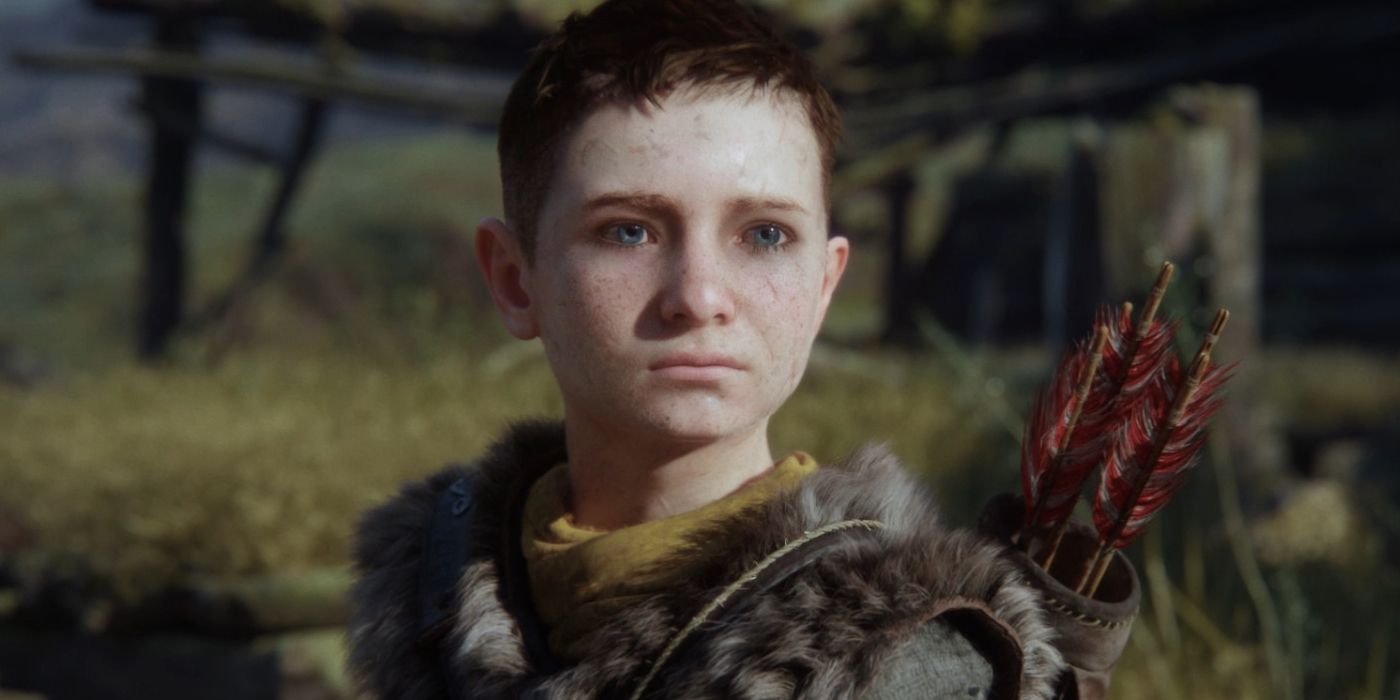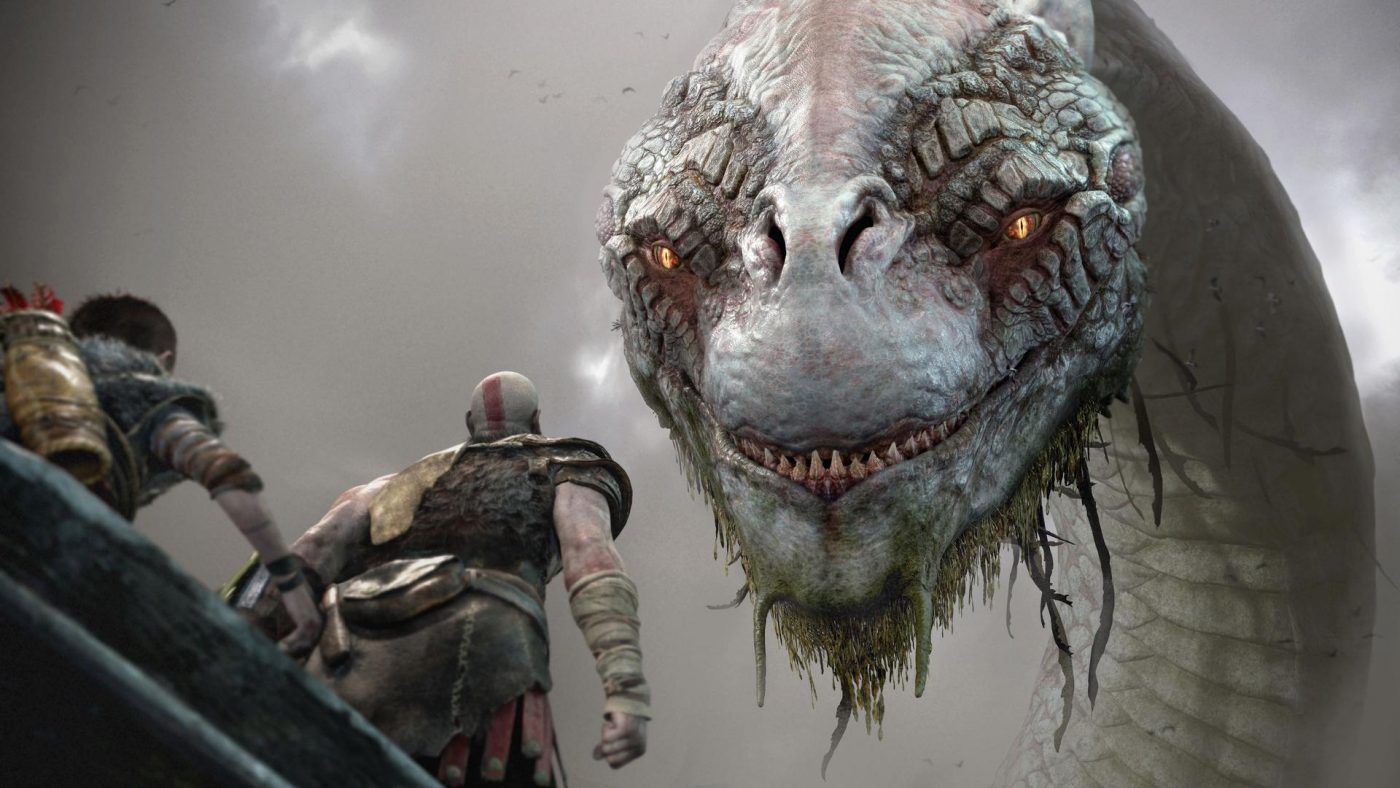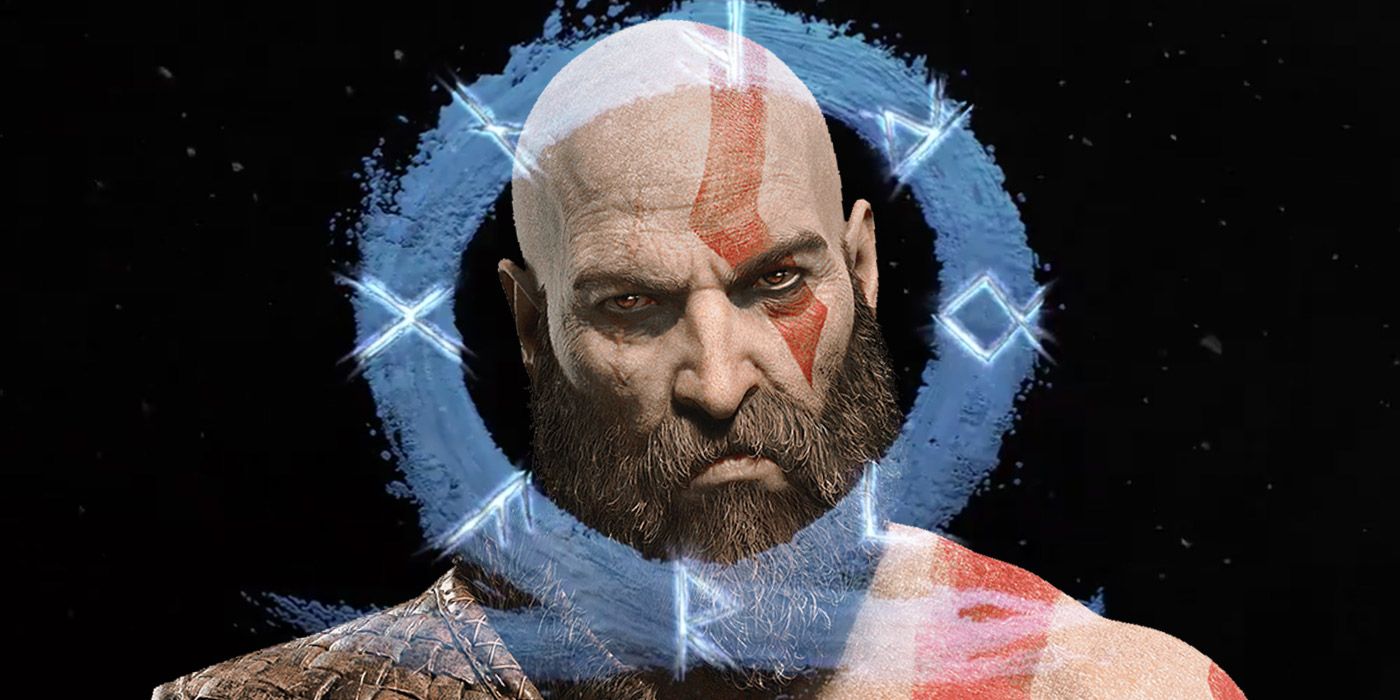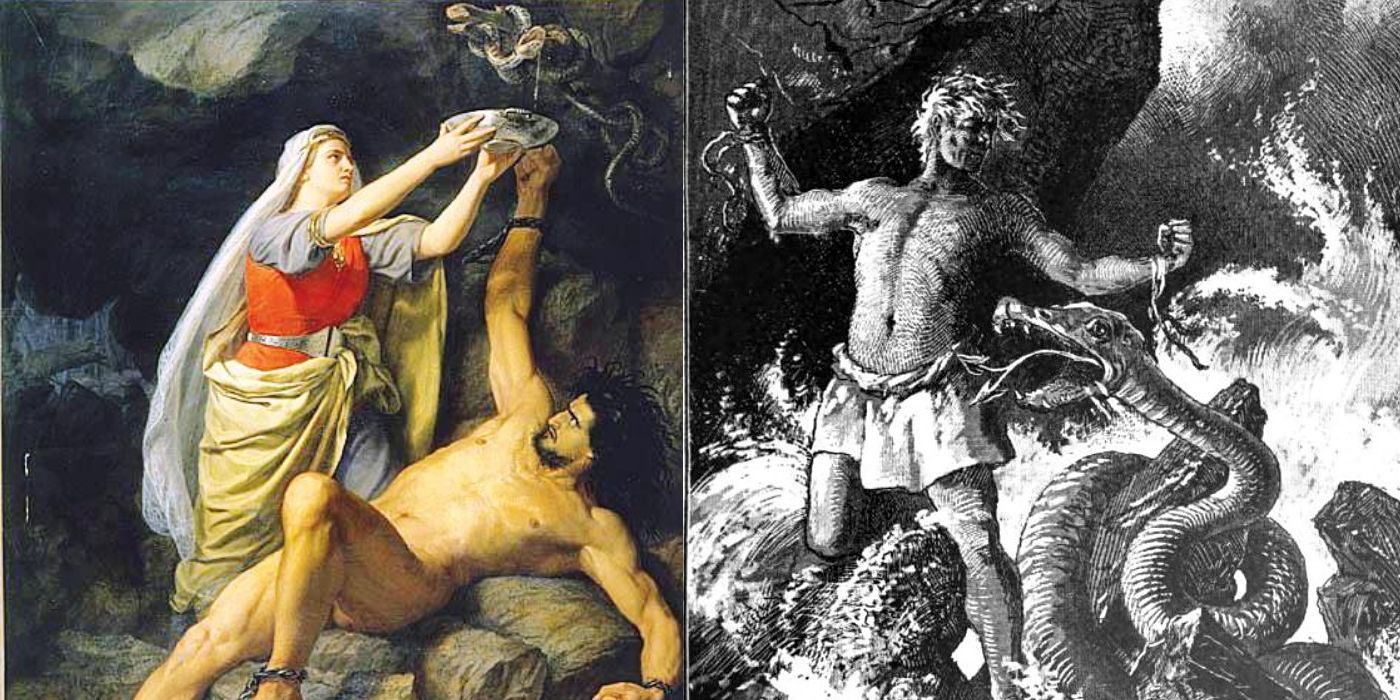God of War's upcoming Ragnarok sequel will see Kratos and Atreus face down the Norse apocalypse. After killing Baldur in the last game, the father-son duo are partially responsible for setting the end times into motion.
Many fans of God of War will be excited to see how Ragnarok is realized in the series' unique take on Norse mythology. However, there is one strange relationship-related question the next installment will need to answer before certain elements from the last game make sense.
Loki's Children
At the end of 2018's God of War, it was revealed that Kratos' son Atreus has another name - Loki. Faye is revealed to be Laufey, while Kratos is revealed to have another name given to him by the giants, Farbauti. In Norse mythology, Farbauti is the father of Loki, while his mother is Laufey or Nils depending on the source. In both cases, this sometimes leads to Loki being likened to a forest fire. Farbauti roughly translates as "dangerous striker," taken to mean lightning, while Laufey or Nils could mean leaves or pine needles ignited by a lightning strike.
In either case, the Loki of Norse mythology has many children. Loki is married to Sigyn, with whom he has two children named Narfi and Nari, though these names may refer to the same being. Loki also transforms into a mare, is impregnated by a stallion, and gives birth to Odin's eight-legged steed Sleipnir. Loki also has several children with the giantess Angrboda, known as the mother of monsters. These are Hel, the ruler of the dead; Fenrir, the monstrous wolf; and Jormungandr, the world serpent.
Loki's many children raise an obvious question for God of War now that Atreus has been revealed to be the Norse god of mischief. Atreus is only a young boy, and naturally has no children in the 2018 game. However, Kratos and Atreus meet the world serpent. Mimir refers to Fenrir several times in 2018's God of War using an alternate name for the wolf, Hrodvitnir. Odin can be seen riding the horse Sleipnir in an image on the Hrungnir Shrine.
All of this would imply that Loki is not the father of these beings in the God of War timeline. However, this does not appear to be the case. The Jormungandr's Shrine has a series of Elder Futhark runes on it. When translated, part of the runic inscription describes the world serpent as follows: "Son of Loki and Angrboda. Brother of Fenrir, Hel, and the Iron-Wolves."
Unless this is an inconsistency in-universe, this has huge implications for Atreus in God of War's Ragnarok sequel. First, it confirms the existence of Angrboda and her role as the mother of monsters. It also confirms that Fenrir, Hel, and the world serpent are siblings, and most importantly it confirms that Loki - AKA Atreus - is their father.
Norse Mythology And Time Travel
God of War 2 established the possibility of time travel in the God of War universe. In the second game, Kratos was killed by Zeus after the patriarch of the Olympian gods became paranoid that Kratos would one day destroy his pantheon. However, he was rescued on his way to the Underworld and told to seek out the Sisters of Fate. Kratos was able to do so, and took control of the Loom of Fate itself. Through this, he was able to return to the moment of his betrayal, bringing an army of Titans with him.
There are some reasons that a time travel plot could integrate into a story about the Norse gods more seamlessly than it did then. In Norse mythology, the exact nature of Ragnarok differs between different sources. In some, it appears to be the total end of the world. In others, it is part of a broader structure of cyclical rebirth. In many Norse myths, it's unclear whether or not Ragnarok is supposed to have happened at some point in the past, or is still yet to come.
Loki's Prison
The strange relationship that Norse mythology has to time could be an interesting way for God of War's Ragnarok sequel to deal with Atreus. It's possible that Atreus will in some way travel back in time, becoming the Loki of Norse mythology in time for Ragnarok. It would even make sense that the older Loki has yet to be seen in-game. In Norse mythology, Loki is imprisoned underneath the earth, where a snake drips venom on his face. His wife Sigyn holds a bowl to collect the venom, but when it overflows Loki writhes in pain, causing earthquakes.
While Loki does many other things in the myths, it would make sense that he's inside this prison during the first game. Loki is only depicted as breaking free when Ragnarok begins. It's possible that at some point in the next game, Atreus will be flung back into the distant past, and that players will see a far older version of the character escape his bonds with the onset of the end times. For a series that deals with some of gaming's most intense father-son relationships, Kratos suddenly meeting a version of Atreus who is older than him may not be out of the question.
It's also possible that, rather than reinterpreting Loki's relationship to his mythological children, the game will reinterpret his prison. It's possible that Atreus himself is a form of prison for a much older being. The risk with the time travel plot is that it could repeat plot points seen in God of War 2, while the risk with having Loki imprisoned inside of Atreus is that it could undermine Atreus' characterization and him more naturally developing into the Norse god of mischief. However it's done, if the runes in 2018's God of War are to be believed, the next game will have to explain how Atreus came to be the father of creatures far older than him.
A sequel to God of War is currently in development for the PlayStation 5.




